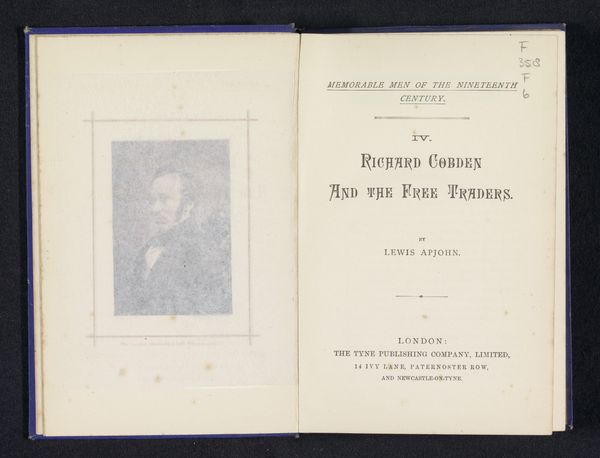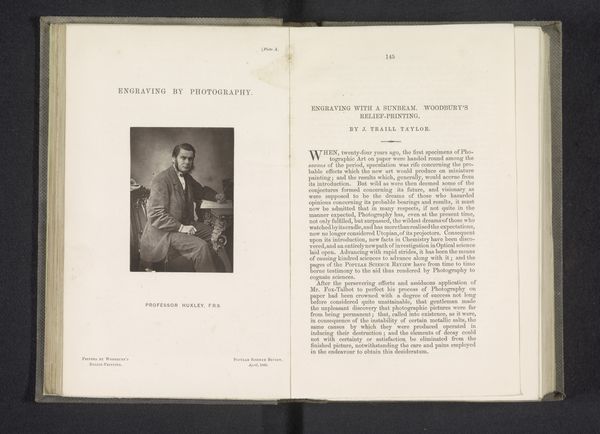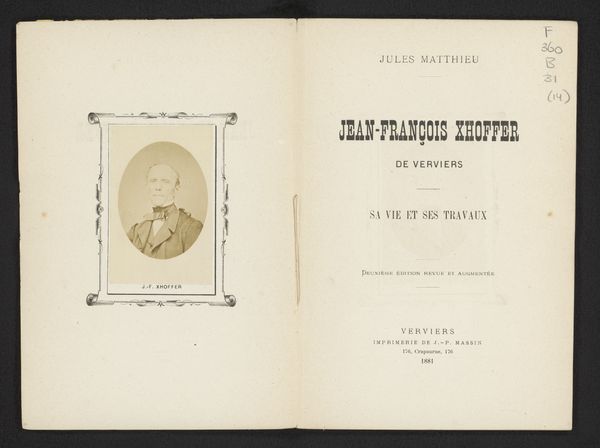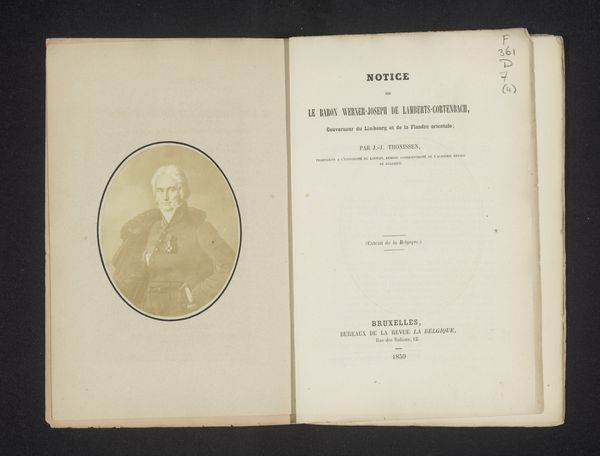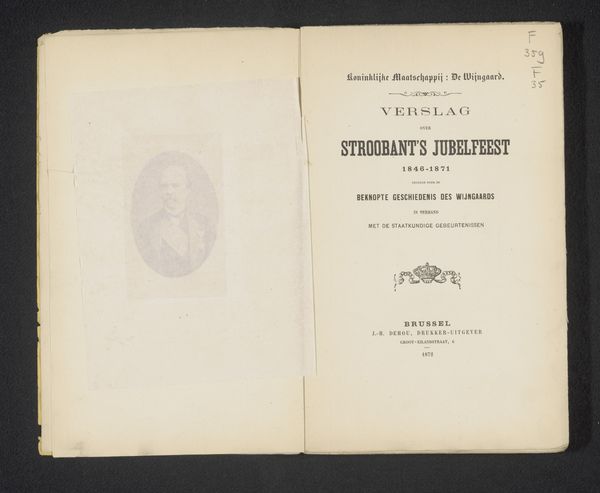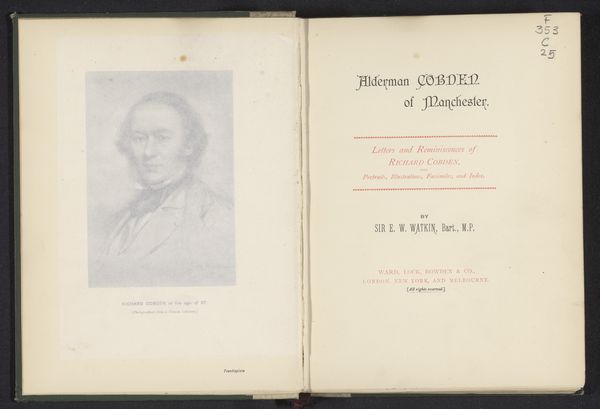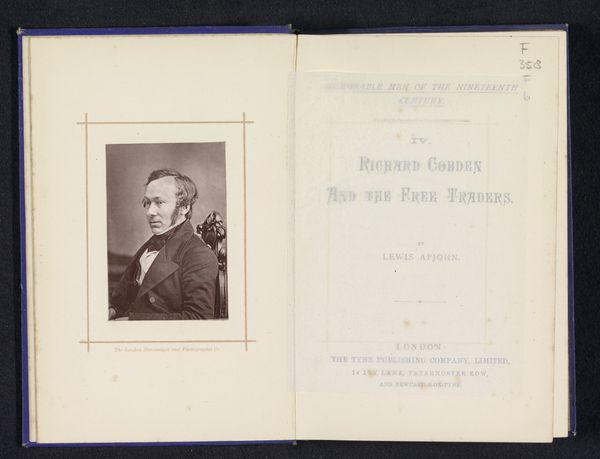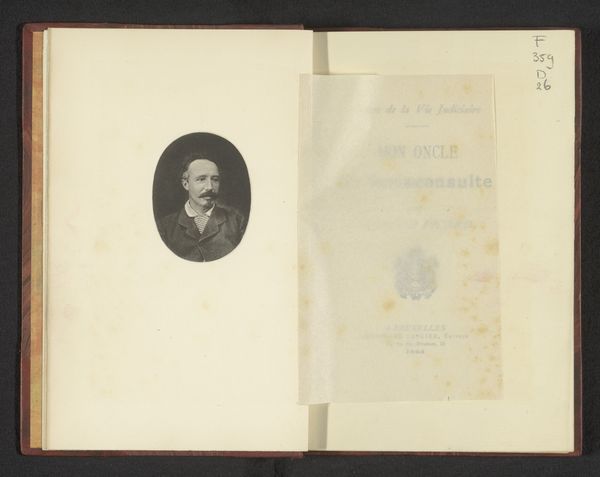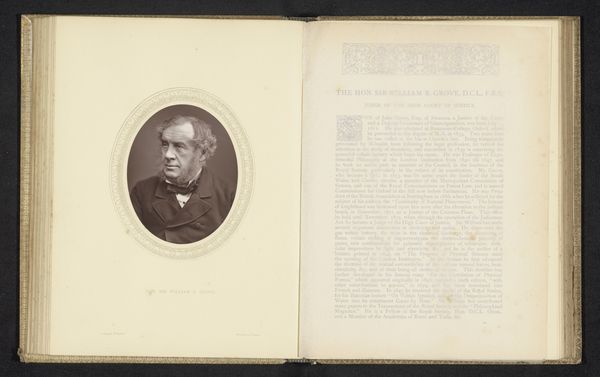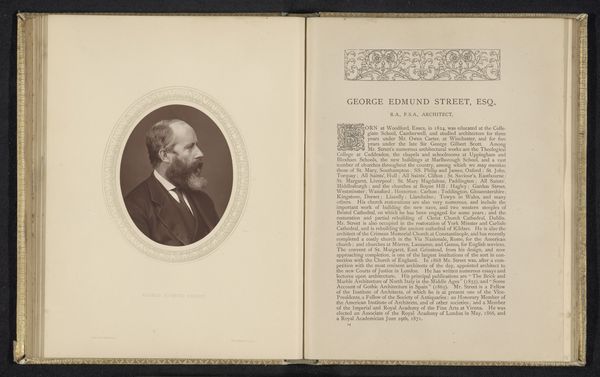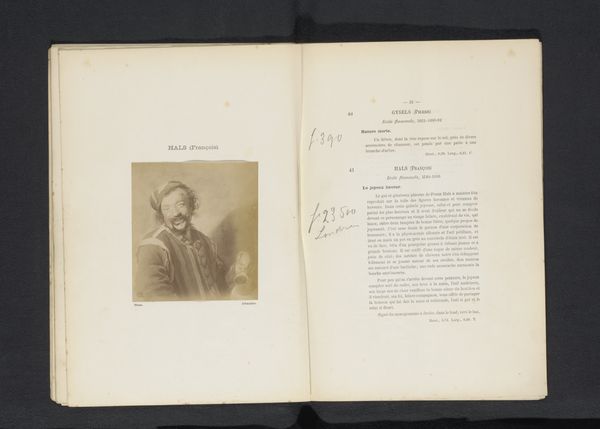
#
aged paper
#
homemade paper
#
hand drawn type
#
personal sketchbook
#
hand-drawn typeface
#
fading type
#
thick font
#
sketchbook drawing
#
handwritten font
#
historical font
Dimensions: height 192 mm, width 134 mm, thickness 25 mm
Copyright: Rijks Museum: Open Domain
Curator: What strikes you first about this image, aside from its obvious vintage charm? Editor: Oh, instantly, the light. It’s muted, almost ghostly. Like peering into a memory, distant and a bit hazy around the edges. Then, the asymmetry. One side feels weighed down by a shadowed portrait, the other balanced by the density of the text. It’s got an intriguing imbalance to it, which, honestly, hooks me right away. Curator: That portrait you mention faces us from the left page. Across the opening, we have the title page to "William Ewart Gladstone: His Life and Times," identified as number one in a series called "Memorable Men of the Nineteenth Century." It’s credited to Lewis Apjohn, published around 1880 by The Tyne Publishing Company in London. Editor: "Memorable Men..." it smacks of Victorian seriousness, doesn't it? But that portrait… it’s so delicately rendered, like a whisper of a face, and yet positioned next to this very bold typeface, "WILLIAM EWART GLADSTONE." There's a tension, a dialogue almost, between intimacy and historical record, public image and private persona. I find that dichotomy fascinating. Curator: Absolutely. The typeface is quite remarkable; thick and rather elaborate, indicative of the era's design sensibilities. The combination creates an aura of solemnity and importance but, to me, it suggests something else too. Look how it mimics a handwritten script—almost suggesting authenticity. It speaks of individuality within the grand narrative of history. Editor: It's true—and there’s this fading quality that emphasizes age, like we're discovering it after ages lost in someone's attic. Curator: Think about it, icons in manuscript books had power beyond the images that referred to people. Type and pictures are often seen in the same context to lend an evocative connection to faith, truth and even propaganda. Editor: Exactly. Now I'm left pondering the essence of historical portrayal. Are we merely observing a relic, or are we subconsciously engaging with a dialogue, a contrast that history relentlessly thrusts upon us. It's all deeply intriguing.
Comments
No comments
Be the first to comment and join the conversation on the ultimate creative platform.
